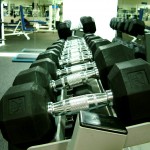In another marketing gimmick, the food industry has taken dried fruit from its image as simply the prunes eaten by grandparents, and turned it into a hot health food with many exciting options. But, how does it really measure up?
Dried fruit has less vitamin C than fresh fruit. Good dental hygiene is a must, as well, because the sticky nature of dried fruit can lead to tooth decay. Dried fruit also has less water than fresh fruit which means that it has more calories per bite. Those calories are only further bumped by the frequent use of unhealthy additions – added sugar , granola clusters, chocolate, glazes, and a “yogurt” coating (which is really oil, sugar, and non-fat milk powders).
That being said, dried fruits do offer a good, convenient alternative to fresh fruit for meeting the recommended daily servings of fruit. Just be sure to keep these tips in mind when shopping. Fruit contains naturally occurring sugar so the food label can be misleading. When looking for sugar content, instead look at the ingredient list. Skip any with added sugar. Other than cranberries, additional sweetening shouldn’t be needed. Banana chips tend to be fried in coconut oil – another skip. Finally, don’t purchase any dried fruit based on claims such as their antioxidant content, ability to “cleanse and purify the heart”, or added vitamins. Most claims are unsubstantiated.

